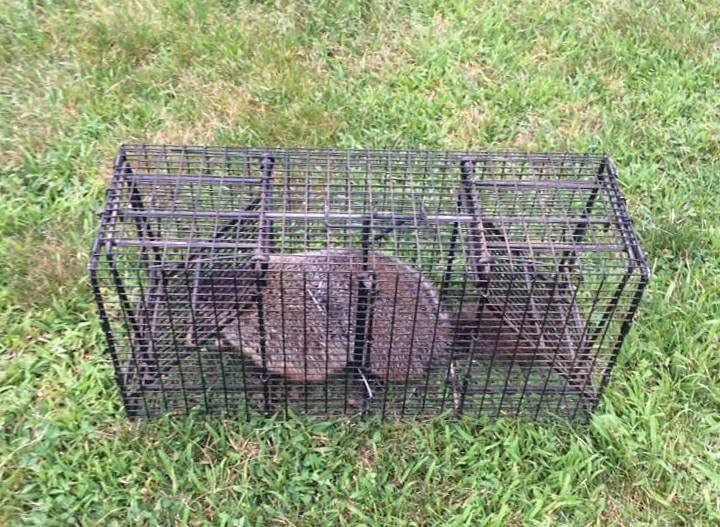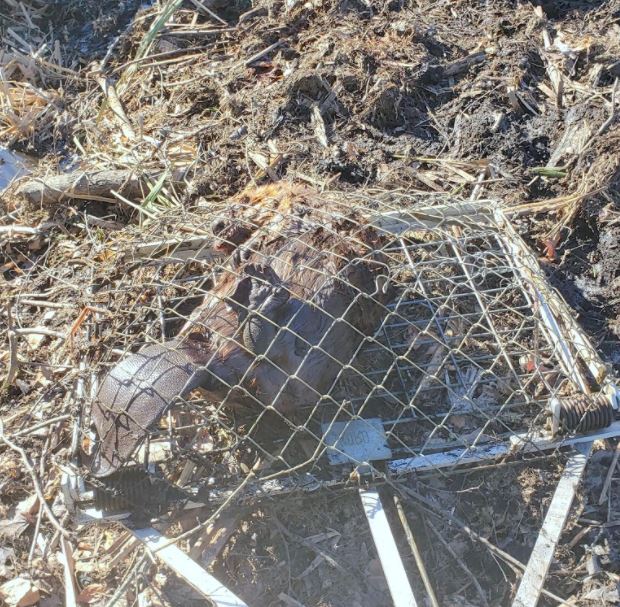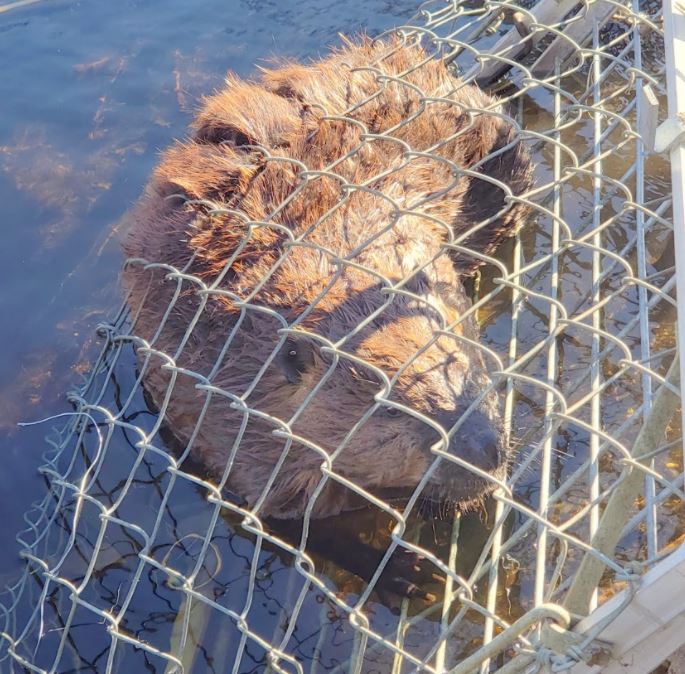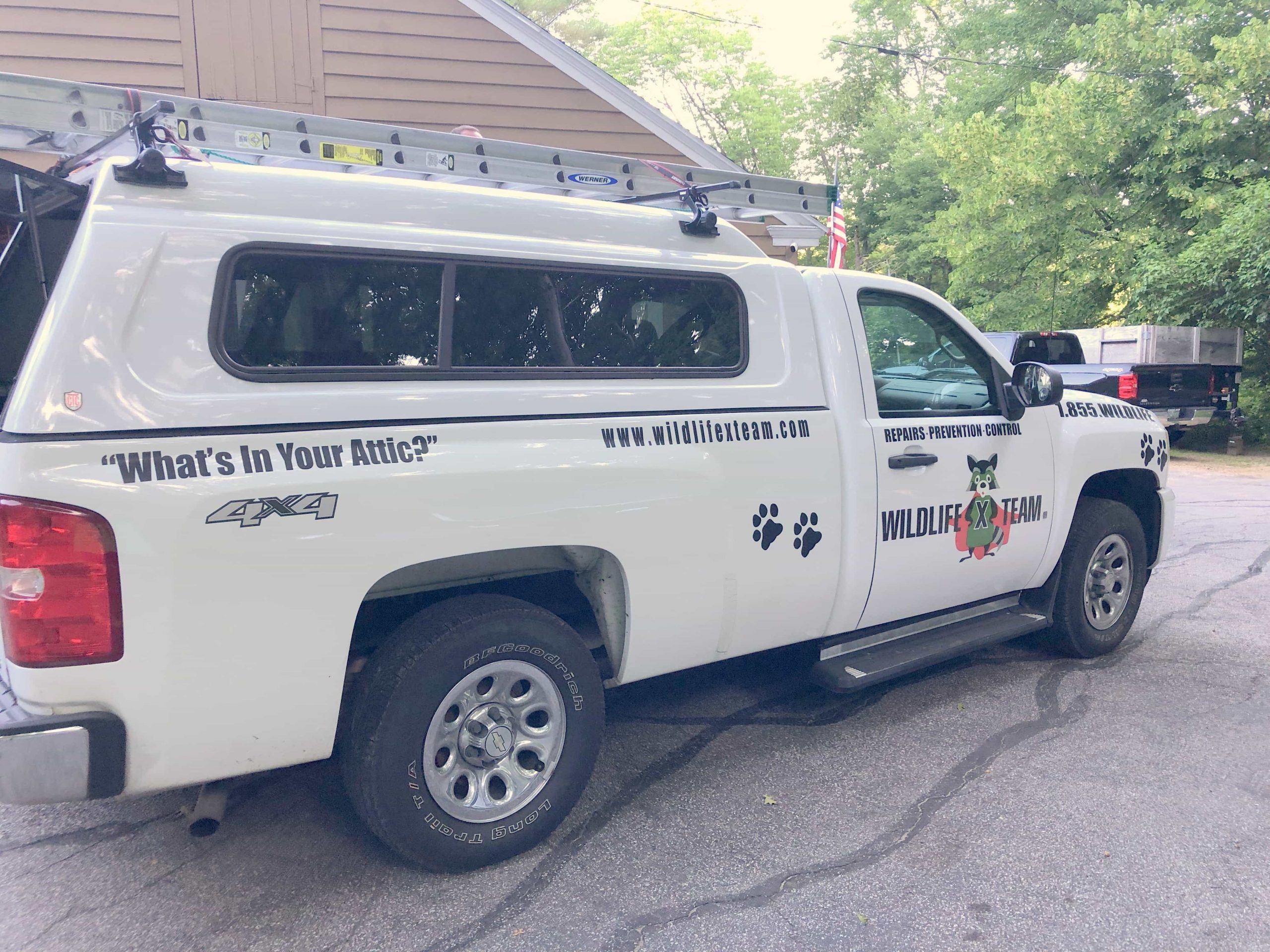Wildlife Removal New Hampshire

Call for Your Exclusive Wildlife Inspection Report.®
BEAVER REMOVAL
Beavers are energetic and smart. They can transform almost any freshwater they come across into a suitable habitat for themselves. They are quite difficult to control because they are usually well adapted to their new environment. Beavers adapt well to any situation, but this does not exclude the fact that they are extremely destructive critters. Beavers are pros at building strong dams, but this makes them a pain in the neck as they interrupt the flow of water and cause flooding in areas that shouldn’t be flooded, and even damage existing dams.
Beavers are nocturnal critters, meaning that they are most awake and alive at night. They eat trees and damage them. With their lodges, beavers divert water, and this could result in damage to nearby properties. Being territorial, they expand their habitats because they are always looking for new sites to build their homes.
Beavers also carry diseases like rabies. They carry diseases and parasites that cause giardiasis – popularly known as beaver fever; they transmit this disease to humans when they ingest the water that harbors beavers.
SIGNS OF BEAVER DAMAGE
Some of the signs of the presence of beavers include:
- Flooded timber, roads, and fields
- Downed or girdled timber
- Lodges, slide crossovers, stripped limbs, and cut crops
- Dammed streams and culverts
CONTROL METHODS
Beavers create problems for landowners. They have been responsible for the damage of ornamentals crops, timbers, and even buildings. It’s no surprise that landowners have sought ways to get rid of beavers, many of which are unfortunately unsuccessful.
Here are some tips you can try out yourself to help with your beaver problem.
- Install drain pipes which make their dams go bad and thus discourages them from using the area.
- Setting traps both live and lethal. You should, however, know that lethal traps are for the skilled.
The most effective means of beaver removal is beaver trapping. Some repellants claim to be effective on repelling beavers, but pest removal experts believe they do not work as well as they claim. Some of these repellants include predator urine scents like foxes or coyotes. Others are scent aversion repellants such as garlic, ammonia, etc. Application of these repellants will have to be constant, and there be no guarantees to their effectiveness.
Using beaver traps is technical. So, it is important that, if you are using them, you know how to use beaver traps effectively, or enlist professional help. Contact us at Wildlife X Team New Hampshire for professional help in the efficient trapping of beavers.
If beavers keep you up at night due to their nocturnal activities, or you have noticed any of the signs of beaver activities on your property, then it is time to contact our experts at Wildlife X Team New Hampshire. We provide highly effective beaver trapping, control, and removal services.

BEAVER PREVENTION
It’s pretty common, in the life of every property owner in the United States to run across their fair share of wild animal intruders, during their lifetime. These can mean snakes, squirrels, rats, and why not, even beavers. Which is how articles like this one get written. Today, we’re here to show you some techniques and share with you some tips for preventing a beaver invasion on your property. Additionally, visit wildlife-removal.com to learn more about beavers.
The tips and tricks below are varied, and usually range from those easy to implement, to those that are fairly complex. And while they all have some success, nothing beats balling a wildlife removal service like Wildlife X Team New Hampshire. A wildlife removal professional will give you tips on prevention that are personalized to your property’s specific needs and weak points, not to mention they’ll be able to fix those weak points, and better safeguard your property against beavers, as well as other wild animals.
But if calling a wildlife removal professional isn’t an option for you, we invite you to look over the tips below.
Are beavers all that bad?
The opinions on this are mixed, with many saying that having beavers around can actually be beneficial. Firstly, their dams are known to correct and improve water flow, so if you’ve got a water body on your property, beavers might actually improve it.
Not only that, beaver secretions are also used for various kinds of medicine, including for pain relief. Still, beavers can also be a nuisance, so here are some tips for keeping them away.
Live Traps
As it happens, live traps are by far the most effective way of keeping beavers out of your pond or lake (aside from the above, of course). Live traps offer a humane removal option, although they can be a bit tricky to work especially if you’ve never operated one before. What’s worse, they don’t really work well if you’re dealing with several beavers.
Still, you could visit your local specialty store and check out your live trap options to get rid of your beaver problem. And now, let’s talk a bit about prevention.
Repellents
There are several kinds of commercial beaver repellents that you can apply to your trees and that will be effective in keeping beavers away (usually by giving off an unpleasant odor). The trouble with repellents, however, is that they tend to wear off fairly quickly, so you’ll constantly need to reapply them if you want to maintain a high prevention rate.
What’s worse, beavers are fairly adaptable creatures, and can, in time, get used to the unpleasant odor. And that’s not what you want, because then, the repellents will lose their effectiveness. So at best, repellents are a good beaver prevention method for the short term.
Beaver Fences
Another option you should really be looking at is putting up a beaver fence if you don’t have one already. These special fences are made from a very sturdy type of wire mesh that you’ll use to surround your trees and your property. The smart thing about this mesh is that no matter how much you chew on it (and beavers are pretty good at chewing, we have to give them that!), it doesn’t break or tear. This sort of fence could also help you keep other wild animals, such as rats or squirrels at bay, so that’s always a nice little bonus.
Really, if you want to keep beavers off your property, we suggest using a beaver fence as prevention, and having the number of a good wildlife removal service at hand, just in case you need it.
What Diseases Do Beavers Carry?
Beavers do not come to mind when we think of dangerous wild animals. These creatures are undeniably adorable, and their work ethic is admirable. But if you study them closely, you’ll soon realize their destructive capabilities. From damaging trees to blocking watercourses, beavers have a significant landscape impact.
Even worse, they pose several health risks to humans and pets. That’s why you must take beaver infestation seriously. This post explores some of the common zoonotic diseases beavers carry.
- Giardiasis
Also known as beaver fever, Giardiasis is the primary disease caused by beavers and a host of other animals too. Giardiasis is a diarrheal disease caused by the microscopic parasite Giardia duodenalis.
Infected beavers release this parasite into water bodies through their poop. Humans get infected with this disease when they consume contaminated water. The parasite lives in the intestine and can even be transferred by humans through poop. This parasite is dangerous because it can survive outside a host for weeks or even months.
Besides diarrhea, other symptoms of Giardiasis include gas, stomach cramps or pain, dehydration, and upset stomach or nausea. Children and those without access to safe drinking water are at a higher risk of contracting Giardiasis.
Thankfully, simple antibiotics like metronidazole can treat this infection. It also helps to practice proper hygiene. Wash your hands. Safeguard your food and water properly and avoid interaction with wild animals like beavers.
- Tularemia
Tularemia is a rare infectious disease caused by the bacterium Francisella tularensis. This disease primarily affects rabbits, rodents, and hares. It also affects birds, domesticated animals, and even beavers. Humans get infected with tularemia from direct exposure to or bites from infected animals. That is why you should never handle live or dead beavers.
Most people start experiencing symptoms within 3 to 5 days of contracting the sickness. Common symptoms include skin ulcer, chills, fever, headache, swollen and painful lymph glands, and exhaustion.
The locality is one primary risk factor for tularemia. Those residing in Arkansas, Oklahoma, Missouri, and South Dakota are at a higher risk. Certain occupations like hunting, gardening, and veterinary practice also increase potential exposure to the bacteria.
When left untreated, tularemia can result in inflammation of the lungs, irritation around the heart, infection around the brain and spinal cord, bone infection, and in the worst-case scenario, death. However, antibiotics like doxycycline, streptomycin, and ciprofloxacin can also be used to treat this disease.
- Leptospirosis
Leptospirosis is a disease caused by infection with Leptospira bacteria. Infected animals pass this bacteria into soil and water through their urine. Several animals like cattle, dogs, horses, pigs, and wild animals like beavers can carry this disease.
Humans become infected when they come in contact with the urine (or other bodily fluids, except saliva) from infected animals. Contact with food, soil, or water that has been contacted with the urine of an infected animal can also cause leptospirosis.
Leptospirosis can cause a wide range of symptoms in humans. Examples include chills, muscle aches, high fever, vomiting, headache, red eyes, diarrhea, abdominal pain, and rash. Leptospirosis can result in more severe conditions like kidney or liver failure if left untreated.
Simple antibiotics like penicillin and doxycycline can be used to treat leptospirosis. However, treatment should be given early in the course of the disease. Staying away from contaminated food, soil, and water will keep you safe from leptospirosis.
Keeping your family safe
Humans rarely get infected by beavers. However, it’s wise to keep yourself and your family safe. Here are some tips to keep you safe from beaver diseases:
- Do not come in direct contact with beavers
- Do not feed beavers – they’ll only come back for more.
- Practice proper hygiene by washing your hands regularly with soap and water.
- Deal with beaver infestation on your property promptly.
- Visit the doctor if you notice any symptoms of an infection.
Get Quote for Your Exclusive Wildlife Inspection Report.®


Our service areas include New Hampshire and surrounding neighborhoods. These include:
Laconia, Meredith, Alton Bay, Alton, Ossipee, Center Harbor, Center Tuftonboro, Gilmanton, Gilmanton Iron Works, Holderness, Rumney, Lochmere, Loudon, Newfound Lake, Moultonborough, Gilford (Govt. Isl), Grafton, Plymouth, Andover, Danbury, Hebron, Tilton, Winnisquam, Ashland, New Hampton, Bristol, Salisbury, Wolfeboro Falls, Belmont, Hill, Bridgewater, New London, Sunapee, Wilmot, Wolfeboro, Holderness, Franklin, Squam Lake, Sanbornton, Lake Winnipesaukee, Sunapee Lake, and Silver Lake.


Call for Your Exclusive Wildlife Inspection Report.®


